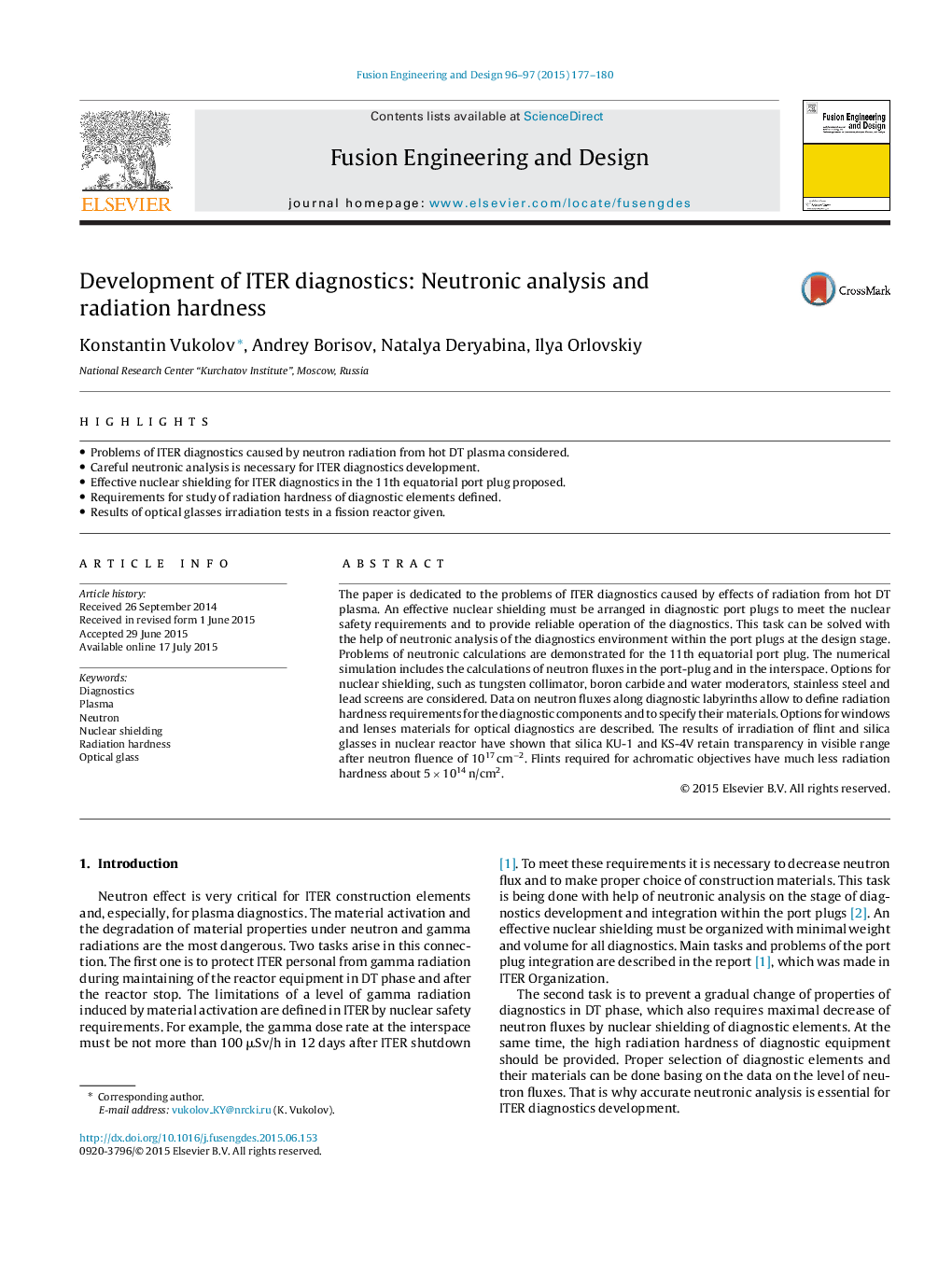| Article ID | Journal | Published Year | Pages | File Type |
|---|---|---|---|---|
| 6745860 | Fusion Engineering and Design | 2015 | 4 Pages |
Abstract
The paper is dedicated to the problems of ITER diagnostics caused by effects of radiation from hot DT plasma. An effective nuclear shielding must be arranged in diagnostic port plugs to meet the nuclear safety requirements and to provide reliable operation of the diagnostics. This task can be solved with the help of neutronic analysis of the diagnostics environment within the port plugs at the design stage. Problems of neutronic calculations are demonstrated for the 11th equatorial port plug. The numerical simulation includes the calculations of neutron fluxes in the port-plug and in the interspace. Options for nuclear shielding, such as tungsten collimator, boron carbide and water moderators, stainless steel and lead screens are considered. Data on neutron fluxes along diagnostic labyrinths allow to define radiation hardness requirements for the diagnostic components and to specify their materials. Options for windows and lenses materials for optical diagnostics are described. The results of irradiation of flint and silica glasses in nuclear reactor have shown that silica KU-1 and KS-4V retain transparency in visible range after neutron fluence of 1017Â cmâ2. Flints required for achromatic objectives have much less radiation hardness about 5Â ÃÂ 1014Â n/cm2.
Related Topics
Physical Sciences and Engineering
Energy
Energy Engineering and Power Technology
Authors
Konstantin Vukolov, Andrey Borisov, Natalya Deryabina, Ilya Orlovskiy,
